Exploring Jembong Waterfall
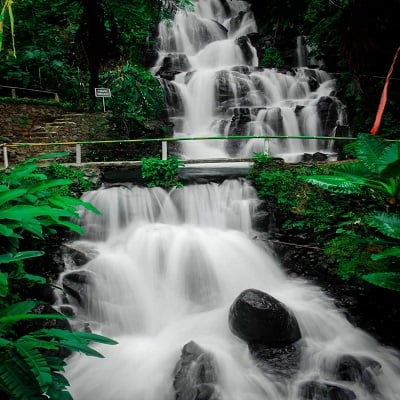
Exploring Jembong Waterfall. Bali is renowned for its serene landscapes, lush greenery, and breathtaking waterfalls. Among its many natural wonders, Jembong Waterfall, located in North Bali, stands out as a tranquil retreat for those seeking peace and natural beauty away from the bustling tourist hotspots. Nestled amidst cocoa plantations and surrounded by vibrant tropical vegetation, Jembong Waterfall offers visitors a chance to connect with nature and experience the spiritual essence of the island.
1. Introduction to Jembong Waterfall
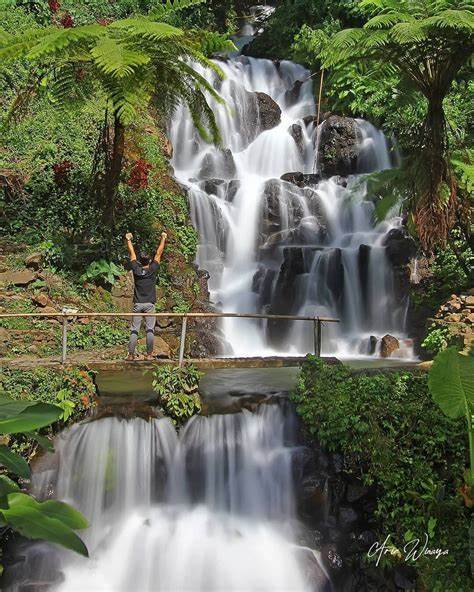
Jembong Waterfall is located in the village of Ambengan, in the Sukasada district of Buleleng Regency, North Bali. While not as famous as Sekumpul or Gitgit waterfalls, Jembong offers an equally captivating experience with its serene environment and easily accessible path.
Unlike many other waterfalls in Bali that feature vertical drops, Jembong is characterized by its gentle cascade over a sloping rock face. The water flows gracefully, creating a soothing ambiance that makes it ideal for relaxation, meditation, and reflection. This hidden gem is also considered a spiritual site by locals, adding to its unique charm.
2. Location and Accessibility
Where is Jembong Waterfall?
Jembong Waterfall is situated approximately:
- 15 minutes from Gitgit Waterfall
- 30 minutes from Lovina Beach
- 2.5 hours from Ngurah Rai International Airport (Denpasar)
The waterfall’s location in North Bali makes it a perfect addition to a day trip exploring the region’s other attractions, such as rice terraces, traditional villages, and Lovina’s famous dolphin tours.
How to Get There
- By Car or Scooter: The most convenient way to reach Jembong Waterfall is by renting a car or scooter. The roads leading to the site are well-paved, and parking is available near the entrance.
- Guided Tours: Many local tour operators include Jembong Waterfall in their North Bali itineraries, providing transportation and insights into the area’s history and culture.
Once you arrive, the waterfall is just a short walk from the parking area, with an easy path leading through lush greenery and cocoa plantations.
3. What to Expect at Jembong Waterfall

The Waterfall
Jembong Waterfall is known for its unique sloping structure, where water flows smoothly down a rocky incline surrounded by verdant tropical plants. The gentle cascade creates a tranquil atmosphere, making it a perfect spot for relaxation and photography.
The clear pool at the base of the waterfall is ideal for wading or splashing around. However, it’s not deep enough for swimming, which adds to the calm and family-friendly vibe of the site.
Cocoa Plantations
One of the unique features of Jembong Waterfall is its location amidst lush cocoa plantations. Visitors can observe cocoa trees and learn about the traditional farming methods used by local villagers. The area’s agricultural charm adds to the overall experience, making it a favorite among eco-tourism enthusiasts.
Spiritual Significance
Jembong Waterfall holds spiritual importance for the local community. It is often visited by Balinese Hindus for purification rituals and ceremonies. Small shrines near the waterfall serve as a reminder of Bali’s deep spiritual connection to nature.
4. Activities at Jembong Waterfall
Nature Walks
The walk to Jembong Waterfall takes you through a scenic path lined with tropical plants, cocoa trees, and bamboo groves. The short and easy trail is suitable for visitors of all ages, making it a great choice for families.
Photography
With its picturesque surroundings and unique cascading structure, Jembong Waterfall is a photographer’s dream. The gentle slope of the waterfall, combined with the vibrant greenery, offers countless opportunities for capturing stunning shots.
Meditation and Relaxation
The peaceful ambiance of Jembong Waterfall makes it an ideal spot for meditation or simply unwinding in nature. The sound of flowing water and the cool breeze create a soothing environment that refreshes the mind and soul.
Cultural Interaction
Visitors can engage with locals to learn about traditional Balinese farming practices, the significance of the waterfall, and the rituals performed at the site. This interaction provides a deeper understanding of Bali’s culture and way of life.
5. Best Time to Visit
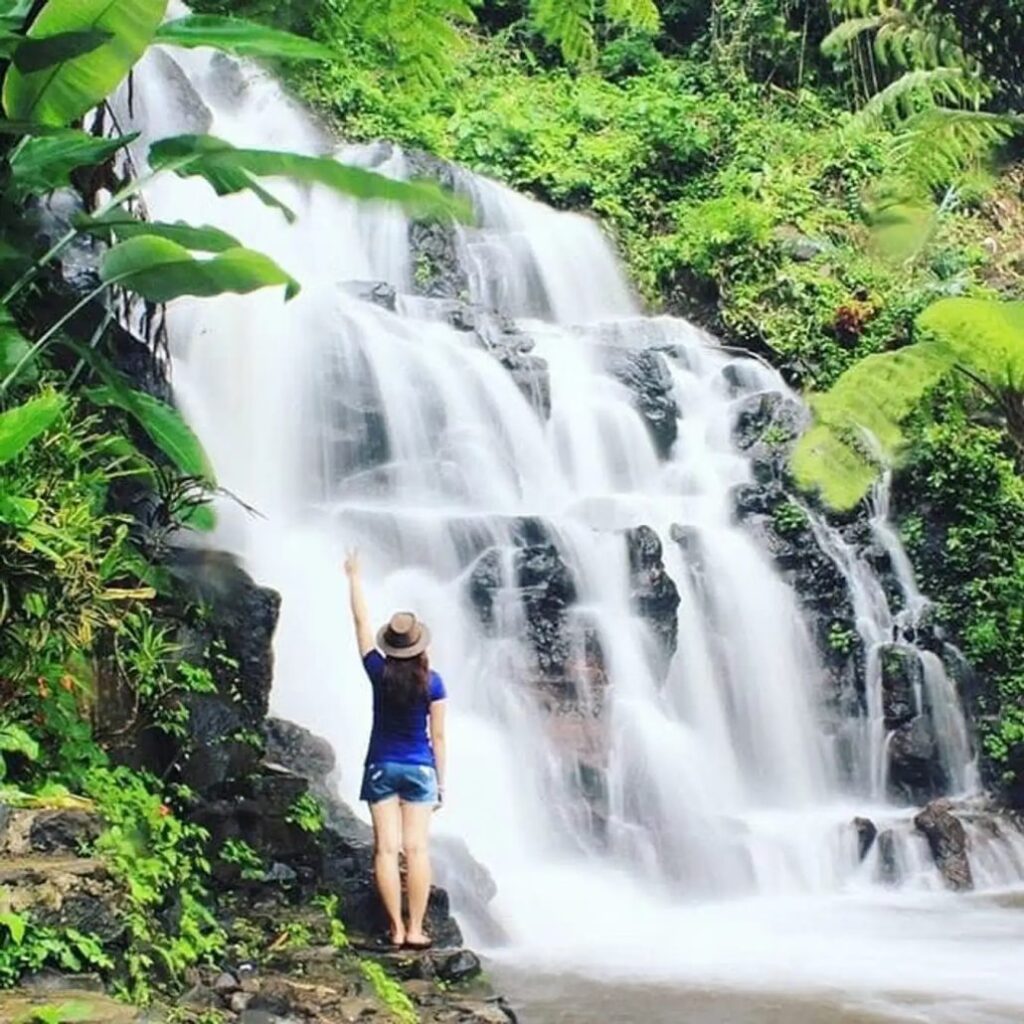
Season
The best time to visit Jembong Waterfall is during Bali’s dry season (April to October). During this period, the weather is pleasant, and the water flow is steady and clear. While the wet season (November to March) brings heavier rainfall, it also enhances the waterfall’s lush surroundings.
Time of Day
Visiting in the morning or early afternoon ensures cooler temperatures and fewer crowds, allowing you to enjoy the waterfall in peace.
6. Practical Tips for Visiting Jembong Waterfall
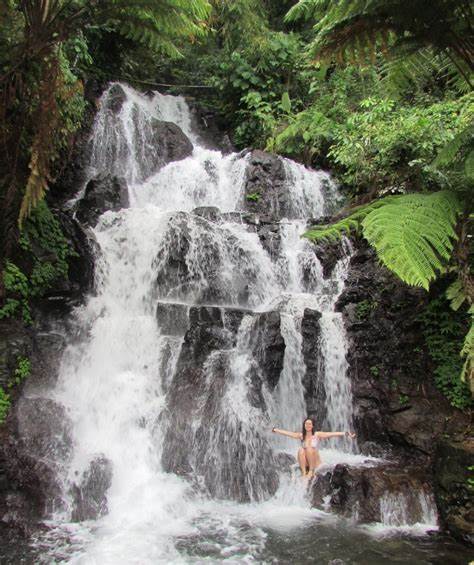
- Dress Comfortably: Wear lightweight clothing and sturdy footwear suitable for walking on jungle trails.
- Bring Water and Snacks: Stay hydrated, especially if visiting during the dry season.
- Camera or Smartphone: Capture the beauty of the waterfall and surrounding plantations.
- Respect Local Customs: If visiting during a ceremony, observe respectfully and avoid disrupting the rituals.
- Small Entrance Fee: Be prepared to pay a modest entrance fee, which helps maintain the site and supports the local community.
7. Why Visit Jembong Waterfall?
Tranquility
Jembong Waterfall offers a peaceful retreat away from Bali’s busier tourist attractions. Its serene setting makes it an ideal spot for those seeking a quiet escape in nature.
Unique Cascading Structure
Unlike the dramatic vertical drops of other waterfalls, Jembong’s gentle cascade over a sloping rock face provides a distinctive and calming visual experience.
Cultural and Spiritual Insight
The site’s connection to Balinese spirituality adds depth to the visit, allowing travelers to explore the island’s cultural and religious traditions.
Accessibility
Jembong’s short and easy trail makes it accessible to all, including families with children and older visitors.
Eco-Tourism Appeal
The surrounding cocoa plantations and lush vegetation highlight Bali’s agricultural heritage, making Jembong Waterfall a must-visit for eco-conscious travelers.
8. Nearby Attractions
While visiting Jembong Waterfall, consider exploring these nearby attractions:
- Gitgit Waterfall: One of Bali’s most popular waterfalls, located just 15 minutes away.
- Lovina Beach: Famous for dolphin-watching tours and stunning sunsets.
- Brahma Vihara Arama: A serene Buddhist monastery offering panoramic views of North Bali.
Jembong Waterfall is a hidden treasure in North Bali that combines natural beauty, cultural richness, and spiritual significance. Its tranquil ambiance, unique cascading structure, and lush surroundings make it a standout destination for nature lovers and cultural explorers alike. Whether you’re seeking relaxation, adventure, or a deeper connection with Bali’s traditions, Jembong Waterfall promises an unforgettable experience in the heart of the island’s untouched landscapes.


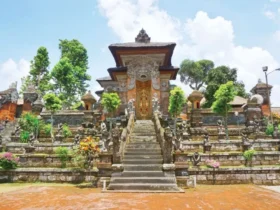
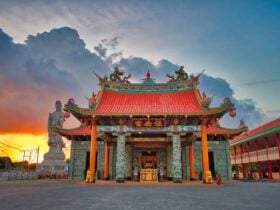
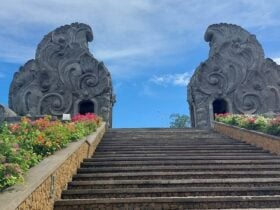
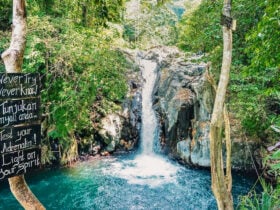
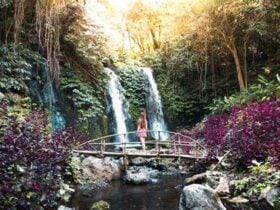

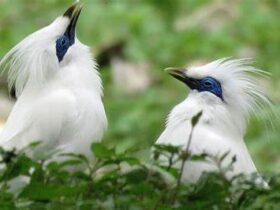
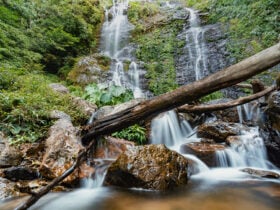
Leave a Review